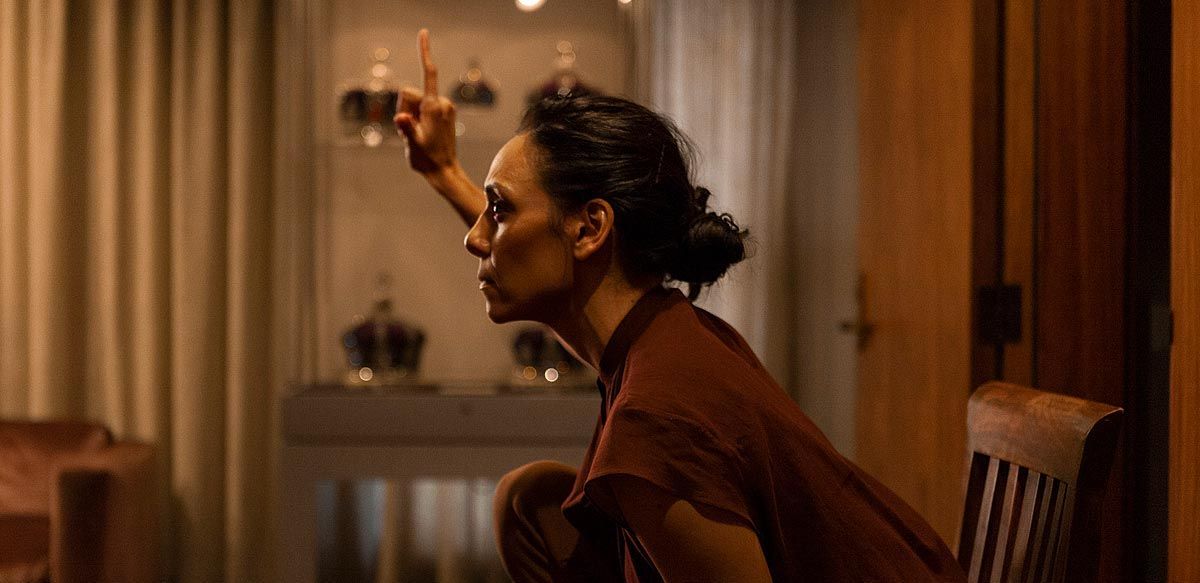By Maggie Nicoll, post-graduate French
Australian-born Angelica Mesiti’s ASSEMBLY is an immersive audio-visual experience that raises questions of communication, cohesion and democracy in the modern age. Recently premiered at the Venice Biennale, the 25-minute long video installation is available to view at the Arnolfini until 26th April.
Entering the exhibition room before the video begins, I am struck by the grandeur of the set-up: a red-carpeted amphitheatre surrounded by three large screens, each depicting a different image from within the ornate Italian Senate. Visitors are to sit on a stepped circle in the middle of the room, resulting in some disparity of experience: for some, all three screens are visible with a slight turn of the head. For others, it is necessary to turn the whole body to see the screen behind them. This intimate circular seating arrangement is a unique feature that adds to the all-encompassing nature of ASSEMBLY.
As I face my fellow spectators for the next half hour, I am distracted occasionally as they turn suddenly to view a different screen, I may even accidentally catch their eye — they become as much a part of the experience as the images on the screens.
The video opens with a man seated in the middle of the grand, red-carpeted Italian Senate chamber, surrounded by circular rows of chairs. As the camera approaches, we can see he is using a ‘Michela’ machine to translate a poem (To Be Written in Another Tongue by Australian David Malouf), into a musical score. The resulting piece is then played by an assembly of musicians, the sound rising and falling throughout the film. It begins with a single piano player, who is then joined by a violin on one screen and a clarinet on the other.
There is an incredible depth of sound, and as it surrounds me, I feel part of something — more than just a detached observer. This seems intentional on Mesiti’s part, as she encourages the spectators to face each other and experience the work together: to remind us of our own ‘assembly’.
50 Cities 50 Traces @ The Vestibules ★★★★
An Iranian Santur is added to the mix, and the camera focuses intermittently on the words ‘another tongue’ on the sheet music, reinforcing the questions Mesiti seeks to raise. As population grows and Western society is increasingly formed of diverse communities of ‘multiple ancestries’ (to quote the curatorial note), how do we communicate effectively with each other and with our democratic governments who are supposed to represent us as a whole? Are we recognising our need to be united and assemble? A quieter interlude in which a dancer repurposes hand gestures from the 2017 Nuit Debout protests in Paris is particularly striking in this regard, as it highlights the difficulties of communication in large crowds and the need to seek new ways of expression.
The Paper Cinema Club @ The Wardrobe Theatre ★★★★
The video explodes to life in the final scenes, when the Zaffe drummers march into view, whirling around as they beat their drums decorated with violet lights, gradually accompanied by all the other instruments and a choir, in assembly. At this point, the experience is at once mesmerising, intimidating, abstract and beautiful: the drumbeats can be felt pulsing through the floor and violet light dances around the room, illuminating the faces of the spectators opposite me.
As the music fades out and leaves only the ghostly voices of the young female choir, whose faces now surround the amphitheatre, we are left to reflect on our position in society, our relation to one another and our agency. Ultimately, ASSEMBLY must be experienced to be understood, and it is a real must-see.
★★★★★
Featured image: Courtesy of National Gallery of Australia
Have you had the chance to visit Mesiti's ASSEMBLY yet? The exhibition runs until Sunday 26th April.





